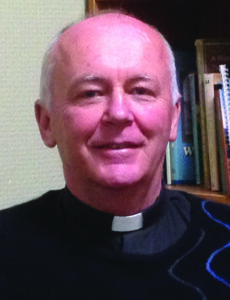The Interior Castle of St Teresa of Jesus of Ávila
Part 2 of 7
The Second Mansion
St Teresa writes briefly and concisely on the Second Mansion and it is all worth reading. This Mansion is called the proper entrance to the Castle and has the word prayer marked over it. Those who enter are determined to pray. But it is a honeymoon stage of prayer. There is much still to learn. An English Carmelite likened the Second Mansion to the busyness and hussle of a railway station. It is a battleground. St Teresa writes, “Can there be an evil greater than that of being ill at ease in our house”? How profound.
We are only just re-born to the world of prayer. Unfortunately, we can go back and do not avoid occasions of sin. We have not yet arrived fully at the experience of contemplative prayer, even though, in the sweetness of prayer, we might feel as though we have. Those in the First Mansion are like the spiritually deaf. But here there is more awareness and listening to the Lord calling.
 We have a clearer vision of God. We are more receptive and open to God’s grace. God is calling us all the time. As St Teresa writes, God uses good books, spiritual friends, sermons, sickness, or lights during prayer. Seek out good friends and the wisdom of the saints. The Doctors of the Church such as St Francis de Sales provide inspired light and truth. Spiritual reading always goes with a prayerful life.
We have a clearer vision of God. We are more receptive and open to God’s grace. God is calling us all the time. As St Teresa writes, God uses good books, spiritual friends, sermons, sickness, or lights during prayer. Seek out good friends and the wisdom of the saints. The Doctors of the Church such as St Francis de Sales provide inspired light and truth. Spiritual reading always goes with a prayerful life.
There is more light and less noise, but the person is uncomfortable and tense, not fully given to God and God’s ways. There is a pull within to return to the First Mansion. There is the call to pray and at the same time the call to pleasure. This is painful, as there is a tension between a call to serve God and the desire to have a good time.
St Teresa writes, “O Jesus, what an uproar the devils instigate here! And the afflictions of the poor soul; it does not know whether to continue or return to the first room”. There is a tug of war. The evil one tells them not to be extreme; that fasting will ruin their health, that we will lose the respect of our friends. In fact, our true friends will welcome our surrender to God. So we need to avoid worldly people who mock the faith or the divine need to embrace the Cross that leads to life.
There is need for much wisdom. A spiritual director is a help. But St Teresa’s advice is to seek first the Kingdom of God and all will be added unto you. Seek to do God’s will; aim to be free of the bondage of the senses and do not let them master you. Thus, aridity in prayer is to be welcomed, as it has the power to teach us that we go to meet the God of consolations and not the consolations of God.
We must approach God humbly and on God’s terms with a sense of humour and not take ourselves too seriously. It is a long journey to love God’s will. When we fail or sin, we simply get up again and begin again. There should not be too much introspection. In fact, failures can provide a divine lesson. Instead of blaming ourselves or being angry with ourselves, we can acknowledge that without God’s grace we can do nothing.
What is especially painful is that the closer we come to God, the further we seem away. The closer to God, the more the light shines on us and we see our imperfections and sins more clearly. We cannot save ourselves. Only God and His grace can save us. That is a very difficult lesson to learn.
Forget about doing well in prayer. Just give the time to God and think of God, not ourselves. We are not the judge of whether we are praying well. There is only one test of real prayer -- we become more loving and forgiving.
The more prayer is centred on God, the more at peace we are. The more our prayer is for us, the less at peace we are. St Teresa writes, “May it please his Majesty to give us understanding of how much we cost him, of how the servant is no greater than his Master”.

 Entries(RSS)
Entries(RSS)